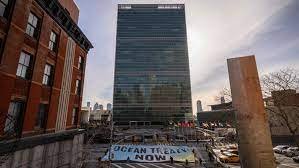On a sunny day in a coastal town, representatives from numerous nations came together to sign a historic treaty. This treaty, the first of its kind, is a major step forward in the protection of ocean life. The agreement establishes a framework for the protection of marine species and habitats, as well as for the prevention of pollution and illegal fishing.
The agreement includes several key elements. Firstly, it calls for the establishment of marine protected areas, or MPAs, in which all fishing and other extractive activities would be prohibited or strictly regulated. It also requires the implementation of a range of measures designed to reduce pollution and mitigate its effects on the ocean. These measures include the establishment of limits on the amount of pollutants that can be discharged into the ocean, as well as the adoption of best practices for safe disposal of waste.
Furthermore, the treaty calls for the establishment of a global system of monitoring and enforcement of ocean conservation measures. This system would be used to detect, investigate, and punish any violations of the conservation measures. The agreement also stipulates that all signatories must cooperate in the enforcement of the treaty, and that there must be an open dialogue between the signatories to ensure the successful implementation of the agreement.
Finally, the agreement calls for the implementation of a range of sustainable fisheries management practices. These practices, which are designed to reduce overfishing and ensure the long-term health of fish stocks, include the establishment of catch limits and quotas, as well as the implementation of measures to reduce bycatch and other forms of habitat destruction.
The signing of this historic treaty marks a major step forward in the protection of ocean life. It is a clear sign that nations around the world are committed to preserving the health of our planet’s oceans and waters, and to ensuring their sustainability for future generations.


